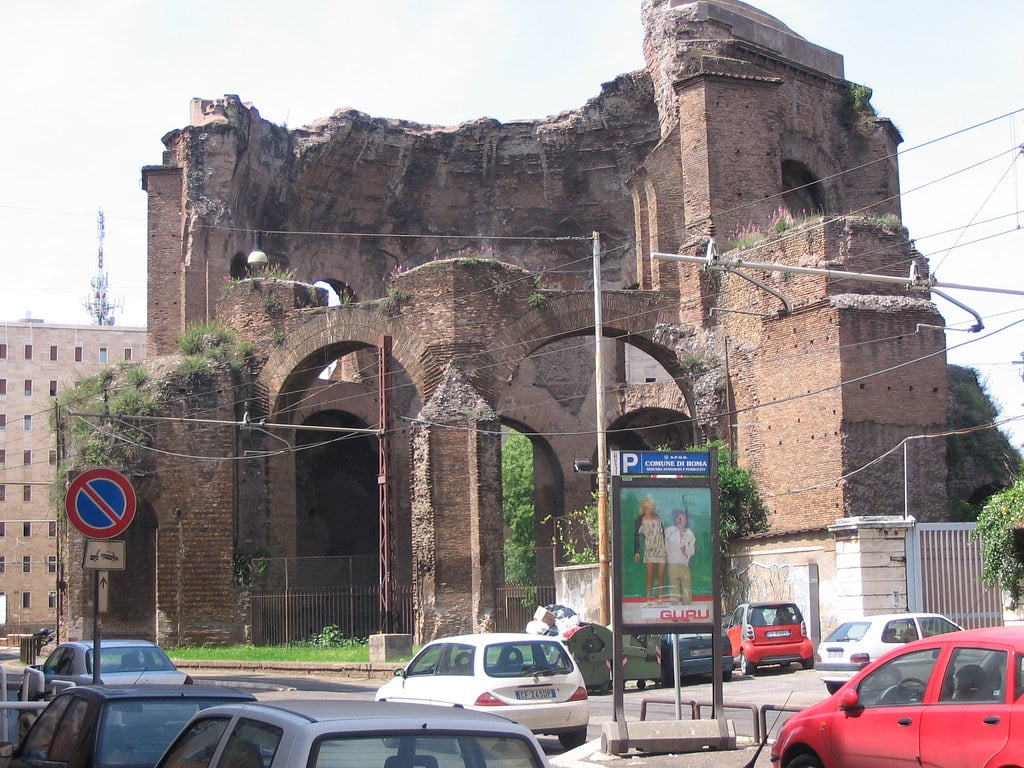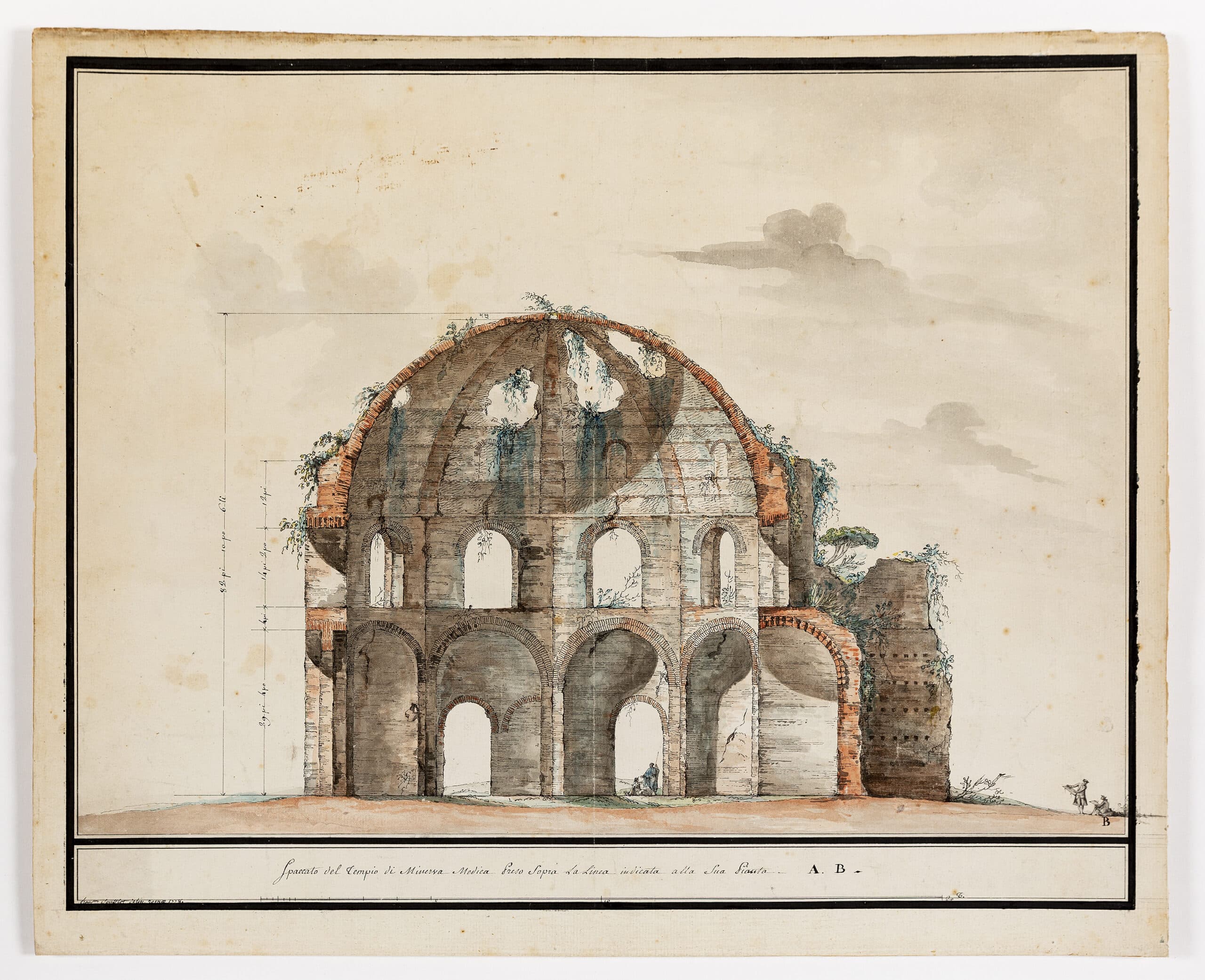Evocation of Solemnity: Temple of Minerva

For the curious visitor that approaches the historic remains of the Temple of Minerva Medica in Rome, it will take a lot of effort to contextualize the building as it could have once been. That which before had allowed for a gentle processional approach to the ruin has now been reduced to a gated, squeezed, minimal portion of spare land between the railway area of the Termini Station and the Rome tram rails. Views are cluttered with electric poles, lighting cables, metal fences and all sorts of typical visual intrusions of the metropolitan age.
If only one could see through the invading urban atmosphere and conceive the solitary structure solemnly aged by nature, its architectural geometry organically populated with greenery, insects and birds (perhaps even the chance wandering hermit). It would be best to close one’s eyes to the caged and polluted reality in front, and keep only that memory, no photographs allowed.

When François Soufflot immortalized the memento on paper in 1778, aware as he is of the outstanding spatial qualities of the place, the power of the drawing as a true representation tool lays in the veracity of the complimentary information that is portrayed; it merges constructive detailing in ink and annotations in pencil together with the melted estate of nature inside, and the physical dreamy atmosphere is achieved by the washes.
The human figures standing on the ground level, marvelling at the silent ballet of lights and shadows above their heads, are there to remind us of the manner in which we should experience the living ruin.
Rodrigo Dominguez is an architectural designer and writer based in Madrid, currently studying economic and political strategies to repurpose derelict urban fabric and abandoned ground level commercial space.
This text was entered into the 2020 Drawing Matter Writing Prize. Click here to read the winning texts and more writing that was particularly enjoyed by the prize judges.

– Sylvia Lavin